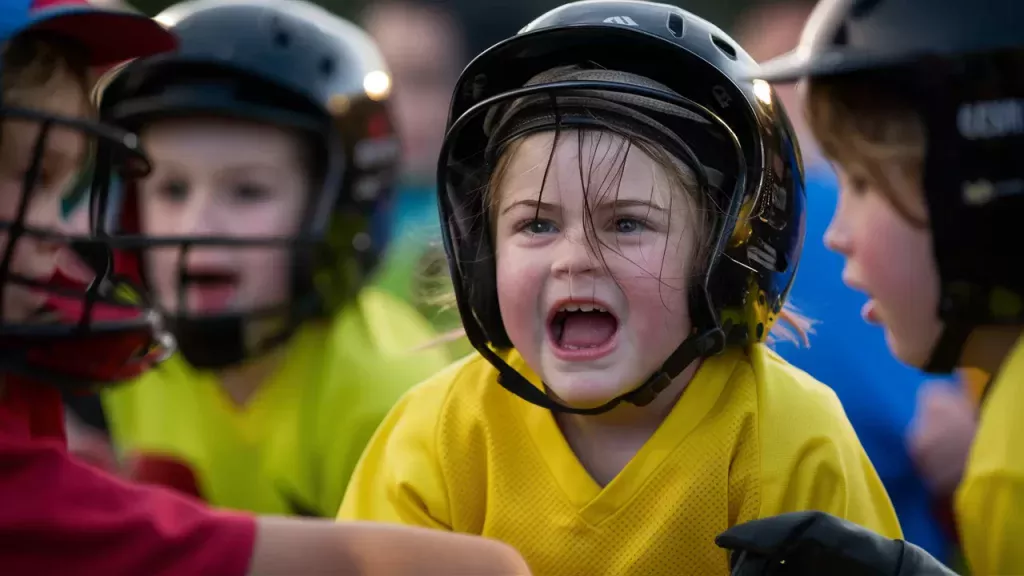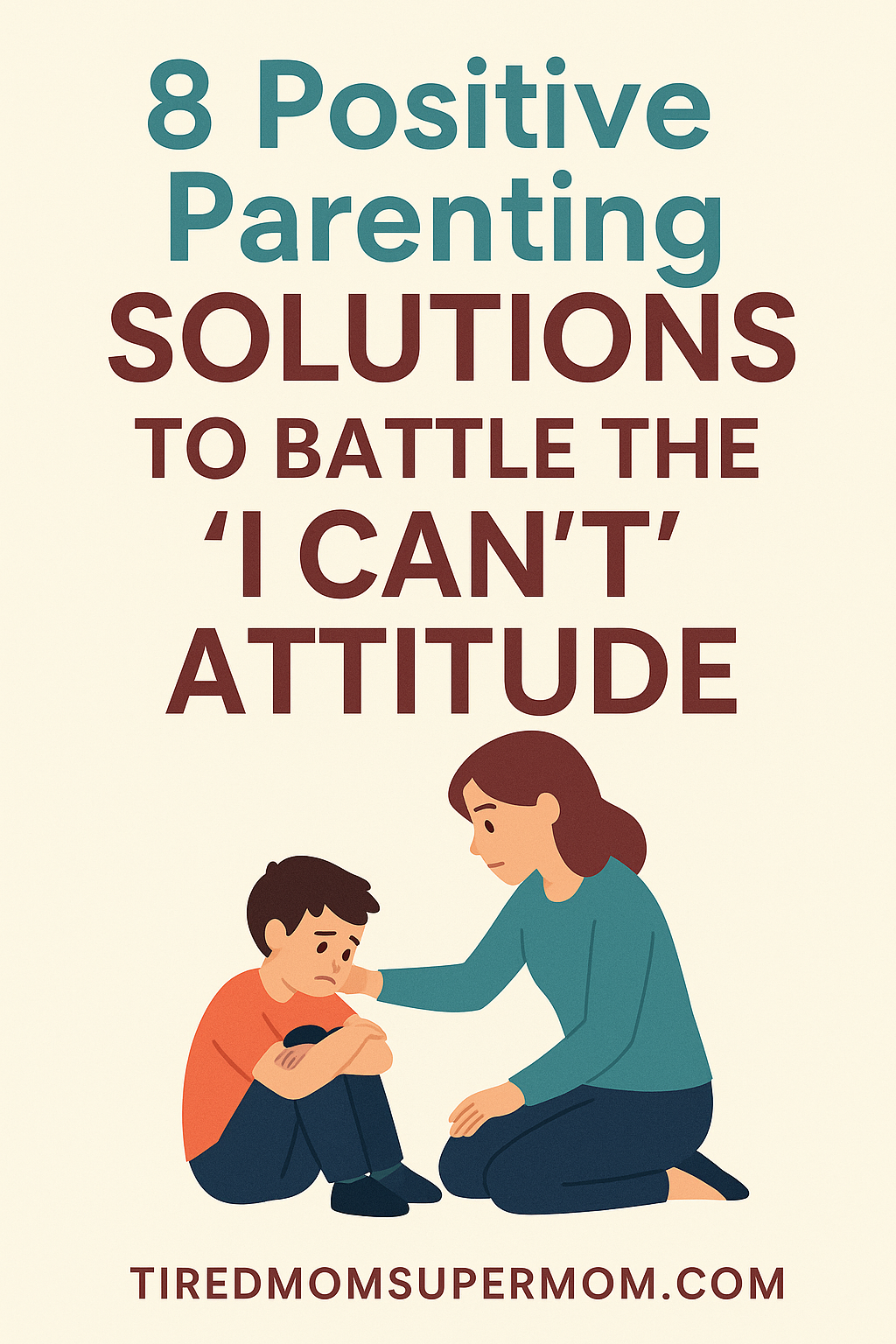How to Help a Child with I Can’t Attitude: 8 Easy Positive Parenting Solutions
If you’re wondering how to help a child with “I can’t” attitude, you’re not alone. Many parents face the frustration of hearing their child give up too quickly when things get tough.
It can be heartbreaking to watch your child doubt themselves, especially when you know they are capable of so much more.
Helping a child overcome the “I can’t” mindset isn’t about pushing harder — it’s about building resilience, supporting emotional growth, and celebrating progress over perfection.
In this guide, you’ll find real-world strategies to help your child shift from self-doubt to self-belief — plus resources and tools that can make a big difference.
Heads up: This post may include affiliate links. As an Amazon Associate, I earn from qualifying purchases—at no extra cost to you. Full privacy policy and disclosure here.

Why It’s Important to Understand How to Help a Child with I Can’t Attitude
Before we dive into solutions, it’s important to understand why kids might say “I can’t” so often:
- Fear of Failure: Some children fear making mistakes so much that they avoid trying.
- Lack of Confidence: Kids may have internalized negative self-talk or comparisons.
- Perfectionism: High personal standards can cause kids to quit when something feels imperfect.
- Frustration Overload: When tasks feel overwhelming, shutting down feels easier.
According to Child Mind Institute, supporting your child through moments of self-doubt instead of fixing the problem for them fosters long-term resilience.
8 Ways to Help a Child with “I Can’t” Attitude
Here are 8 actionable strategies you can use today:
1. Offer Assistance Without Rescuing
When your child struggles, it’s tempting to swoop in and save them. Instead, offer support without solving the problem for them.
✅ Try saying:
“This looks tricky. How can we work through it together?”
🛒 Helpful Resource:
Growth Mindset Journal for Kids — Great for building independent thinking skills.
2. Praise Effort, Not Just Results
Research from Big Life Journal highlights the power of praising effort over outcomes.
Focus on what your child did right, not just whether they succeeded.
✅ Try saying:
“I’m proud of how you kept trying, even when it was hard.”
🛒 Affiliate Pick:
Positive Reinforcement Reward Chart — Encourages children to track progress and build confidence.
3. Normalize Mistakes
Mistakes are part of learning! Share your own “I messed up” moments to show it’s okay.
✅ Story example:
“When I learned to drive, I stalled the car five times. It was frustrating, but I didn’t give up.”
🛒 Related Tool:
Emotions Flash Cards for Kids — Helps kids identify and work through feelings like frustration.
4. Break Big Tasks Into Small Steps
Large tasks can feel overwhelming. Break projects into bite-sized steps to make them manageable.
✅ Parenting Tip:
“Let’s just do the first part together, and we’ll see how it goes.”
🛒 Handy Visual Aid:
Kids’ Visual Schedule Chart — Organizes tasks visually so kids feel less overwhelmed.
5. Encourage Playfulness During Challenges
Sometimes, laughter breaks tension and motivates effort. Turn tough moments into games!
✅ Try this:
“Let’s pretend we’re superheroes tackling this math problem!”
6. Reframe Negative Self-Talk
Teach your child to replace “I can’t” with “I can try.”
✅ Quick Strategy:
Role-play scenarios where they correct themselves:
“Instead of ‘I can’t read this,’ let’s say ‘I can sound it out step by step.’ “
7. Set Realistic Expectations
Some children struggle because tasks are genuinely too advanced. Adjust the difficulty to their developmental stage.
✅ Example:
If your 4-year-old says “I can’t tie my shoes,” start with slip-on shoes and practice tying separately.
🛒 Confidence-Boosting Tools:
Easy Tie Shoelaces for Beginners
8. Model Resilience Yourself
Children learn more from what they see than what they hear. Model problem-solving, self-talk, and persistence in your own day-to-day life.
✅ Real-Life Example:
“That was harder than I expected! I’m going to take a deep breath and try again.”

How to Stay Consistent When Supporting Your Child
Consistency is key when helping a child with “I can’t” attitude. Here’s how you can stay steady:
- Use Encouraging Language Daily
- Celebrate Small Wins
- Stay Patient When Progress is Slow
- Keep Tools Visible (like charts or journals)
- Revisit Goals and Adjust as Needed
Positive change takes time — trust the process.
Frequently Asked Questions About Helping Kids with the “I Can’t” Attitude
What causes a child to say “I can’t” all the time?
Children often say “I can’t” due to fear of failure, overwhelming tasks, or lack of confidence. Building skills gradually helps reduce these feelings.
How can I motivate my child when they give up easily?
Praise effort, use reward systems, and allow for fun breaks. Consistency builds a child’s inner motivation over time.
Should I correct my child every time they say “I can’t”?
Gently guide them toward alternative language like “I can try” rather than harsh corrections.
Are growth mindset tools effective for young kids?
Absolutely! Growth mindset tools like journals and posters help children reframe challenges.
What other resources can I use to build my child’s resilience?
Books like “The Self-Driven Child” are excellent for parents seeking science-backed strategies.
Quick Recap: Key Tools You Can Use
| Tool | Purpose | Link |
|---|---|---|
| Growth Mindset Journal for Kids | Encourages positive thinking | View on Amazon |
| Positive Reinforcement Reward Chart | Motivates daily effort | View on Amazon |
| Emotions Flash Cards | Identifying feelings | View on Amazon |
| Kids Visual Schedule Chart | Organizes steps visually | View on Amazon |
| Easy Tie Shoelaces for Beginners | Simplifies self-dressing | View on Amazon |
Final Thoughts: You Can Turn “I Can’t” into “I Can Try”
Supporting your child through their “I can’t” attitude is a powerful gift. With patience, tools, and encouragement, you’ll watch them develop resilience that will serve them for a lifetime.
Remember, you’re not just teaching them to complete tasks — you’re helping them build a growth mindset that will open doors for the rest of their lives.

